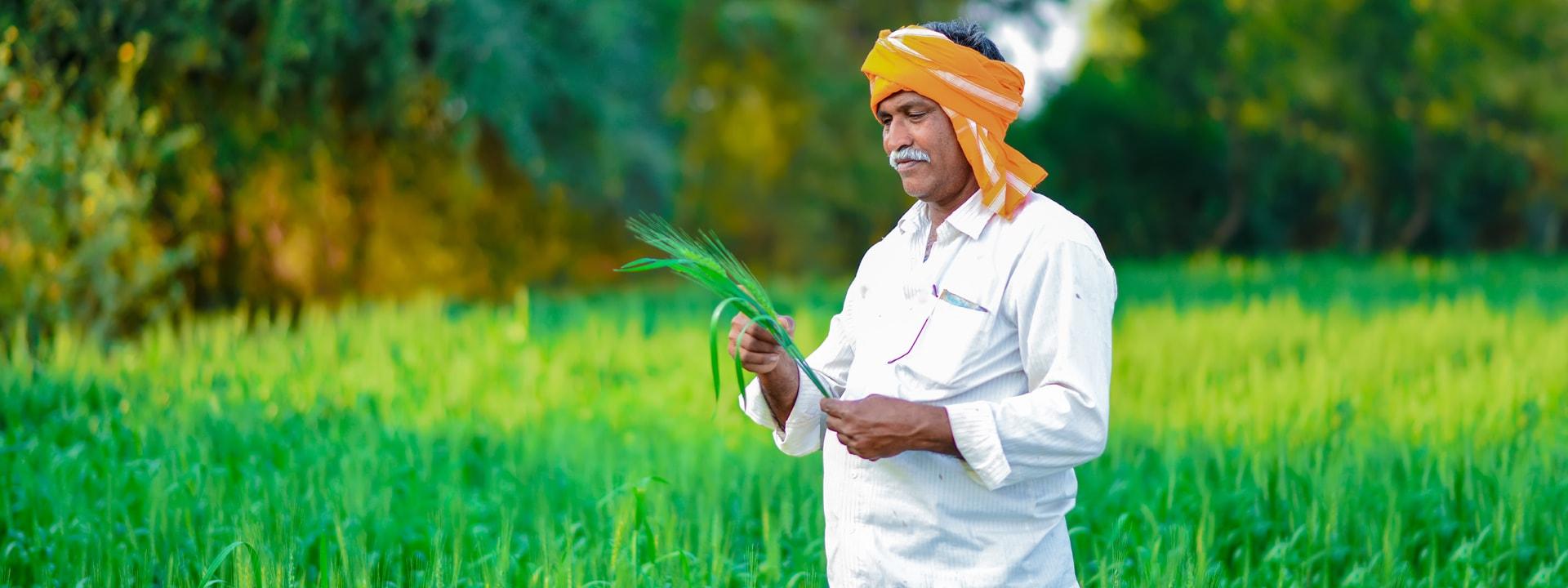Krishi Kalyan Abhiyan
PM Krishi Kalyan Abhiyan was initiated by the Ministry of Agriculture and Farmers Welfare for phase I in 112 aspirational districts across the country. The program’s goal was to develop agriculture and related activities in these promising districts. During this time, Krishi Vigyan Kendras served as the nodal point for an action plan that included actions from all three departments: DAC&FW, DAHD&F, and DARE. Because of the positive response, Krishi Kalyan Abhiyan Phase II will begin in 117 aspirational districts across all states.
List of all schemes of Indian government
Features of PM Krishi Kalyan Abhiyan:
The following are the features of PM Krishi Kalyan Abhiyan phase-II:
- Distribution of Soil Health Cards to farmers.
- Distribution of free Mini Kits of pulses and oilseeds
- FMD Vaccination of Bovine
- PPR Vaccination of Sheep and Goat
- Artificial Insemination
- Distribution of Agricultural Implements
- Training programmes in each of the villages by ICAR/KVKs include following activities:
1. Bee Keeping
2. Mushroom cultivation
3. Kitchen garden (preferably of women)
4. Other relevant income generating activity
- Micro Irrigation/Integrated Farming System demonstrations at KVKs – with at least two farmers each village participating.
- 2 PMFBY Awareness Camps/Programs in each community for non-loanee farmers.
- Each village will produce 20 NADEP / Vermi Compost.
Gramin Haats development (This will be introduced in tandem with MGNREGA). - Horticulture/Agroforestry/Bamboo plant distribution to 100 homes per village at a rate of 5 per family (location appropriate).
Soil Health Card Scheme
A flagship scheme on Soil Health Card was launched by Hon’ble Prime Minister on 19th February, 2015 with an aim to assist state governments in providing Soil Health Cards for all farm holdings across the country at a two-year interval to maintain soil resource health and enable farmers to realise optimum yields at lower costs with minimal environmental damage. Farmers can use the information on the fertility state of their soils from the soil health card to apply suggested balanced dosages of fertilisers in an integrated manner.
Foot and Mouth Disease Vaccination
Fever, vesicles, and blisters in the mouth, hooves, skin between the toes, udder, and teats characterise Foot and Mouth Disease (FMD), a highly contagious disease affecting livestock. FMD prevention is known to be a reliable approach of treatment. The sickness has a negative impact on the animals’ ability to produce. This bovine FMD vaccination programme includes the whole bovine population in the designated communities. KKA requires that 100 percent coverage be provided. However, because the immunisation is given every six months, it should not interfere with the normal vaccination cycle.
Peste des Petits Ruminant Vaccination
PPR, also known as Sheep and Goat Plague, is a highly contagious illness that affects small ruminants and causes fever, oral sores, diarrhoea, pneumonia, and often death. This PPR vaccination campaign for goats and sheep 4 covers all sheep and goats in the specified villages. The KKA requires that 100 percent coverage be provided.
Artificial Intelligence (A.I.)
According to the 19th Livestock Census 2012, India has a 300 million bovine population (cattle 191 million and buffalo 109 million). Exotic and crossbred cattle account for 20% of the 191 million cow population (39 million), while indigenous and nondescript varieties account for the remaining 80%, which are mostly low yielders. A typical Indian cow owned by a poor farmer produces only 1 to 2 litres per day. As a result, appropriate breeding techniques must be used to improve the productivity of our indigenous cattle. Artificial Insemination is the most important approach for improving output. A.I. plays a critical role in increasing cow productivity by boosting genetic potential, which leads to greater milk output. Artificial insemination with the sperm of high yielding indigenous breed (HYIB) bulls will be used to boost the production of our native breeds as part of the conservation and development of indigenous breeds. Artificial insemination of at least 100 breedable bovines will be carried out under this initiative in each of the 25 villages in each Aspirational district.
FAQs
Ques. What is Krishi Kalyan Abhiyan?
Ans. In 112 Aspirational districts across the country, the Krishi Kalyan Abhiyan (KKA) is being implemented. Krishi Kalyan Abhiyan (Krishi Kalyan Abhiyan): The Ministry of Agriculture and Farmers’ Welfare launched it in 2018. The goal is to help, advise, and assist farmers in improving their farming skills and increasing their profits.
Ques. Who is the Agriculture Prime Minister of India?
Ans. Minister of Agriculture Narendra Singh Tomar is in charge of the ministry. Narendra Singh Tomar is an Indian politician who currently serves in the 17th Lok Sabha. He currently serves as the Minister of Agriculture and Farmers Welfare. During the First and Second Modi governments, he served as Minister of Rural Development, Minister of Panchayati Raj, Minister of Mines, and Minister of Parliamentary Affairs in the Indian government.
Ques. What are the 4 types of Agriculture?
Ans. Agriculture, sometimes known as farming, is the cultivation of plants and cattle. Agriculture was a significant factor in the rise of sedentary human civilization, as it enabled humans to live in cities by creating food surpluses from tamed species. One of the four main branches of agriculture is livestock production. Crop production, agricultural engineering, and agricultural economics.
Ques. What is the Ministry of Agriculture?
Ans. Agriculture is the responsibility of an agriculture ministry (sometimes known as an agriculture department, agriculture board, agriculture council, agriculture agency, or ministry of rural development). A minister of agriculture is frequently in charge of the ministry.
Ques. What is the role of the minister of agriculture?
Ans. The Ministry of Agriculture (MoA) is in charge of ensuring that the requirements for organic farming production are followed. It authorises the oversight organisations to conduct regular inspections of all organic operations.
Buy Prime Test Series for all Banking, SSC, Insurance & other exams
Find More News Related to Schemes & Committees


 Indian Olympic Medal Winners List Till N...
Indian Olympic Medal Winners List Till N...
 Who is the Inventor of the Gramophone?
Who is the Inventor of the Gramophone?
 HS Dhaliwal Appointed New DGP Of Andaman...
HS Dhaliwal Appointed New DGP Of Andaman...
